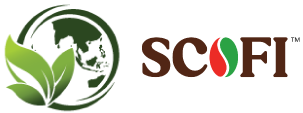The 3 Waves of Coffee in Malaysia
In Malaysia today, coffee is no longer associated with caffeine. The age-old concept of coffee fulfilling the function of morning pick-me-up is slowly fading with the advent of specialty coffee. The world’s favorite beverage is exposed to an incredible amount of intricacy and attention in this movement. Despite the traditional kopitiam’s historic appeal, things are beginning to change.
Coffee shops, both chain and independent are transforming the way many Malaysians drink coffee in public. As the top coffee bean supplier in Malaysia, Scofi believes it is our responsibility to educate our customers and the general public about coffee by describing how the Malaysian coffee scene grew from the first wave to the third wave.
At Scofi, we import many grades of top-quality raw coffee beans, such as arabica beans, robusta beans, and others. In older days, Malaysia used to have the “Kopi,” and we had our morning cuppa with a dish of “Kaya & Butter” toast and a side of half-boiled eggs, and we even had our own “indie coffee” scenes.
After the late 20th century, numerous multinational franchise brands dominated the local cafe sector, including Starbucks, Coffee Bean, and Coffee Bean & Tea Leaf. Espresso, latte, americano, cappuccino, and other beverages were produced primarily with arabica beans, as opposed to “kopi-o,” which was brewed with robusta beans, as we had grown up with. Hence, we want the public to appreciate the past and modern eras of coffee as they served the purpose at that time, respectively.
In the Malaysian context, the first wave would be the local coffee in kopitiams. More widely known as the instant coffee boom, this period began in the late 1800s when entrepreneurs noticed a developing demand for inexpensive and ready-to-make coffee manufacturing, which is why companies such as Maxwell House or, in Malaysia’s instance, Nescafe became household names at this time.
During this time, Malaysians were obsessed with instant coffee or any large-scale manufacture of coffee grounds, when “Kopi” and Nescafe were popular, and possibly, when “Kopitiam” was invented. Not to add that NESCAFÉ is produced using arabica beans and robusta beans. To retain the coffee’s characteristic scent and taste, our proprietary method seals in the power of each coffee bean’s flavor and aroma.
The second wave occurred when coffee was further refined into specialty coffees as a reaction to the previous wave’s “bad coffee” market. It has also witnessed the rapid growth of large Western businesses with their sophisticated equipment and ever-expanding menu of coffee-based beverages. During the second wave, customers began to wonder about the origins of their favorite coffee beans.
In addition, they became interested in learning more about the roasting techniques of arabica beans and robusta beans. The second wave was significantly impacted by wine culture, and the ideas and applications are now being applied to the coffee sector. It was also the age of pricey to-go coffees, which had hit with a thud. The coffee suddenly increased in price from RM1 to RM10. The second wave was fueled by a significant shift in coffee’s perception.
The third wave is a fresh addition to the group. Trish Rothgeb came up with the term in her 2002 piece “The Flamekeeper.” The third wave of coffee was how customers were increasingly interested in the qualities of arabica beans and robusta beans. For example, the first wave was about making coffee accessible to the public, whereas the second wave was about improving coffee. Still, marketing was the driving force in the third, both product and marketing are set aside, and greater attention is placed on manufacturing.
Furthermore, several western and local themed cafes have sprouted up across the countries. Themed cafes are the work of third-wave coffee shops, also known as independent coffee shops, which are an upgrade over the preceding second wave in terms of a deeper grasp of coffee manufacturing.
Aside from changes in coffee consumption culture, these waves of coffee cultures have altered the way Malaysians consume coffee. From a simple cup of coffee with condensed milk and evaporated milk to an Ethiopian Citrus flavor and smokey aftertaste Americano. As the leading coffee bean supplier in Malaysia, Scofi seeks to supply the finest quality of raw coffee beans and keep people meeting and drinking coffee together as a community.
